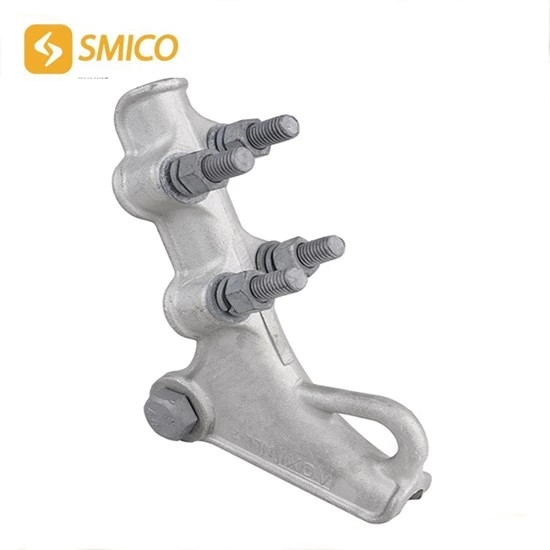Ny-1600k Bolt Type Tension Clamp Hydraulic Crimping Process Specification Description
NY-1600K bolted type strain clamp is a matching hardware developed for the expanded diameter heat-resistant aluminum alloy stranded wire JLHN58K-1600. The dead end strain clamp crimping construction process is carried out in accordance with DL/T 5285-2013 "Technical Specification for Hydraulic Crimping of Overhead Conductors and Ground Wires in Transmission and Transformation Engineering". For ease of operation, the following supplements are made.
4.1 Preparation before crimping
(1) Prepare the corresponding hydraulic press and aluminum mold (Φ105).
(2) Prepare gasoline and cotton yarn for cleaning the conductor, wire clamp body and the inner wall of the steel anchor.
(3) Understand the requirements for the corresponding positions of the bolted dead end clamp steel anchor and the wire clamp body drainage plate.
4.2 Wire stripping and cleaning
(1) The length of the OA section is about 620mm. Use gasoline to clean the surface of the steel stranded wire.
(2) Use gasoline to clean the inner wall of the wire clamp body and the steel anchor steel pipe.
(3) Use gasoline to remove surface dirt before the hydraulic part of the steel core aluminum stranded wire is inserted into the pipe.
4.3 Applying electrical grease
(1) The part where the heat-resistant aluminum alloy stranded wire enters the aluminum tube is coated with electrical grease.
(2) After cleaning and drying the outer layer of stranded wire with gasoline according to the second and third steps, apply a thin and even layer of electrical grease to cover the outer layer of aluminum stranded wire.
(3) Use a wire brush to brush the part coated with electrical grease along the axis of the stranded wire. The surface of the steel core aluminum stranded wire that contacts the aluminum tube after hydraulic pressure should be completely brushed.
(3) After the steel anchor is screwed in, it should be withdrawn together with the conductor until the steel anchor has a step position 115-200mm deep. Then, first crimp it according to the order of the first and second dies on the right until it is close to the position where the drainage plate cannot be crimped. After the crimping is completed, crimp it to the end of the tube according to the order of the first and second dies on the left. The overall crimping is completed. Note: During crimping, each subsequent die overlaps 1/3 of the previous die.

